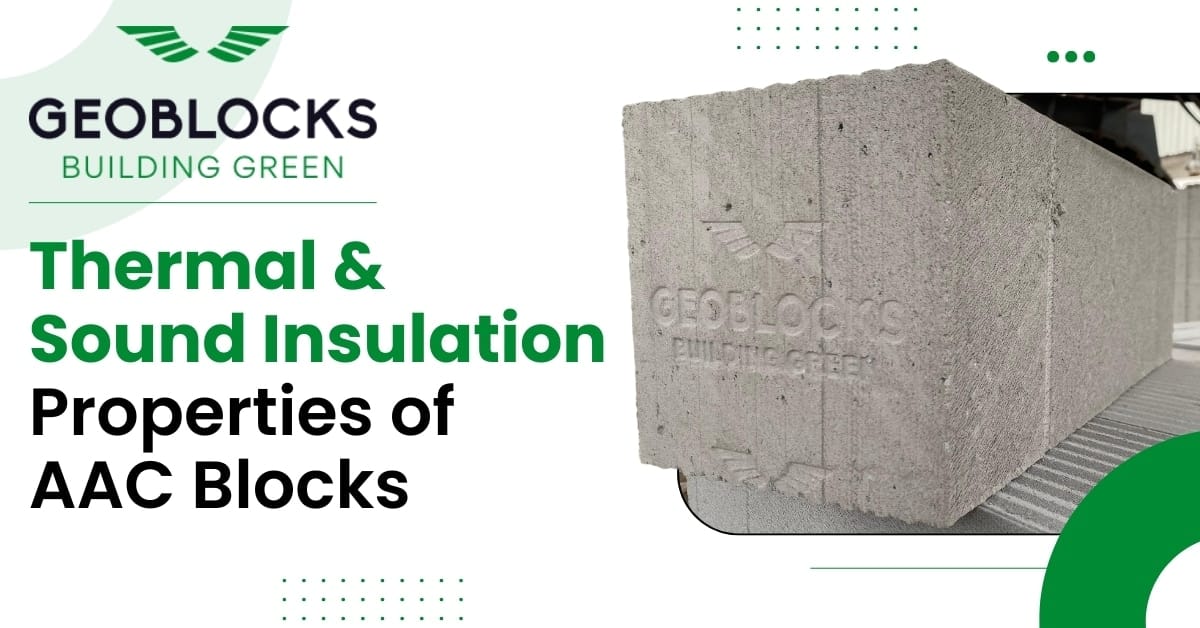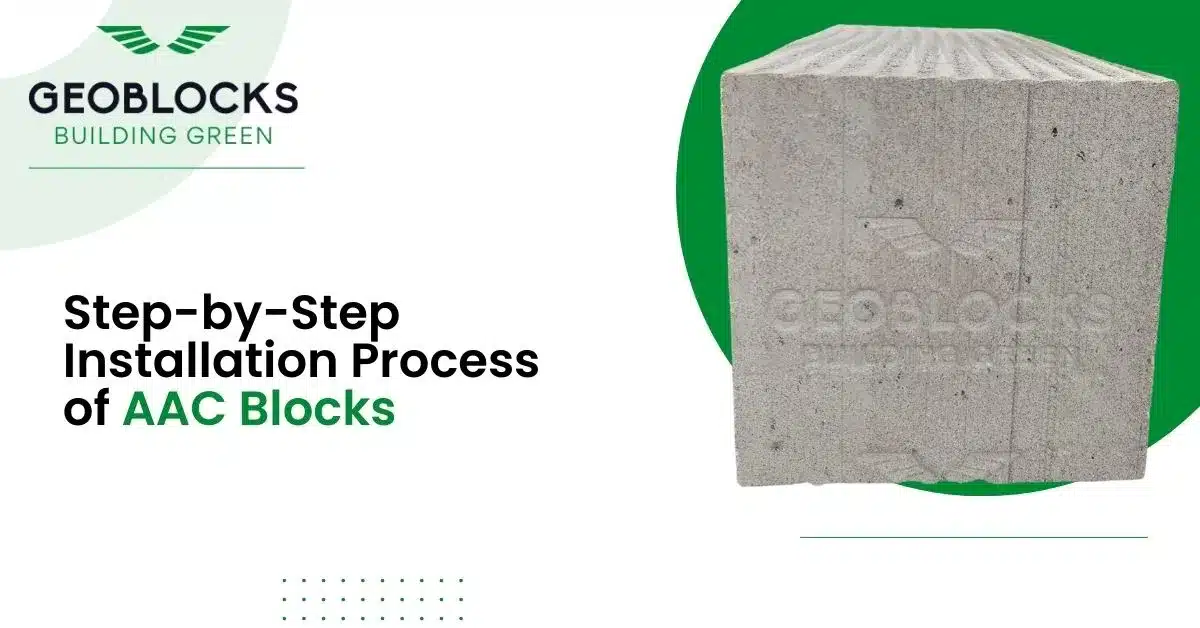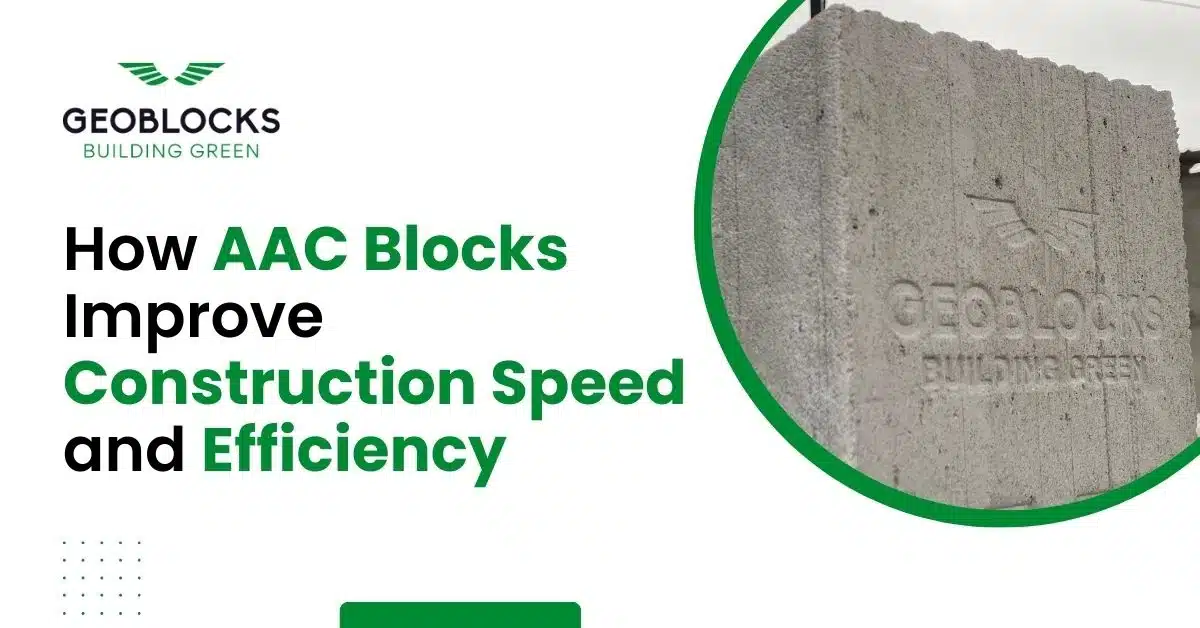Autoclaved Aerated Concrete (AAC) Blocks have revolutionized modern construction with their lightweight, durable, and eco-friendly…

In today’s world of smart construction and sustainable living, insulation plays a crucial role in improving energy efficiency and comfort in buildings. One of the most innovative materials in this space is the AAC Block (Autoclaved Aerated Concrete Block). Known for being lightweight, durable, and eco-friendly, AAC Blocks offer exceptional thermal and sound insulation properties.
GEOBLOCKS specializes in manufacturing high-quality AAC Blocks that not only meet but exceed modern insulation standards. In this blog, we’ll explore how AAC Blocks contribute to a more energy-efficient and acoustically balanced building environment.
What Are AAC Blocks?
AAC Blocks are precast, foam concrete building materials made from cement, lime, sand, water, and a small amount of aluminum powder. During the manufacturing process, the mixture undergoes aeration, forming millions of tiny air pockets. These pockets are what make AAC Blocks lightweight and highly insulative.
AAC Blocks have been widely adopted across residential, commercial, and industrial construction due to their sustainability and excellent performance in extreme climate conditions.
Thermal Insulation Properties of AAC Blocks
One of the standout features of AAC Blocks is their thermal insulation capability. Thanks to their aerated structure, AAC Blocks significantly reduce the transfer of heat between the exterior and interior of a building.
Key Benefits:
- Low Thermal Conductivity: AAC Blocks have a thermal conductivity ranging from 0.1 to 0.2 W/mK, making them much better insulators than traditional clay bricks or concrete blocks.
- Temperature Regulation: They help maintain a consistent indoor temperature, reducing the need for air conditioning or heating.
- Energy Efficiency: Buildings made with AAC Blocks consume up to 30% less energy, leading to lower electricity bills.
- Environmentally Friendly: Reduced energy consumption means a smaller carbon footprint.
GEOBLOCKS AAC Blocks are engineered to deliver maximum thermal efficiency, making them ideal for both hot and cold climates.
Ready to Build Smarter? Contact GEOBLOCKS today for high-performance AAC Blocks that deliver unmatched insulation and energy savings.
Sound Insulation Properties of AAC Blocks
Along with thermal protection, AAC Blocks are also excellent at soundproofing. Their porous structure and density reduce noise transmission, making them ideal for urban or noise-sensitive areas.
Key Benefits:
- Sound Transmission Class (STC): AAC Blocks offer an STC rating of up to 45, which is excellent for residential and commercial buildings.
- Noise Reduction: They minimize both external noise (traffic, construction, etc.) and internal noise between rooms.
- Comfort & Privacy: Enhanced acoustic insulation ensures better privacy and comfort, especially in schools, hospitals, and offices.
By choosing GEOBLOCKS AAC Blocks, you’re investing in a quieter, more peaceful indoor environment.
Real-Life Applications
AAC Blocks are widely used in projects that require a combination of strength, thermal insulation, and soundproofing:
- Hospitals: For maintaining calm and quiet environments
- Educational Institutions: To enhance focus and reduce distractions
- Hotels and Apartments: For better room acoustics and energy savings
- Industrial Buildings: Where both temperature control and sound absorption are critical
Advantages of Using AAC Blocks for Insulation
AAC Blocks are a smart choice for modern construction, offering a perfect blend of thermal efficiency and soundproofing. Their lightweight design and eco-friendly composition make them ideal for energy-efficient buildings that demand durability and comfort.
- Lightweight and easy to handle
- Fire and pest resistant
- Eco-friendly and recyclable
- Faster construction timelines
- Reduces HVAC load, cutting energy bills
AAC Blocks from GEOBLOCKS ensure high performance and long-lasting insulation for modern construction needs.
Make the Eco-Friendly Choice Today! Upgrade your construction with sustainable, energy-efficient AAC Blocks from GEOBLOCKS. Contact Us Today!
Things to Consider Before Choosing AAC Blocks
While AAC Blocks are incredibly efficient, here are a few things to keep in mind:
- Proper installation techniques are key to ensuring maximum insulation performance.
- For external walls, additional protective plastering may be required to enhance thermal and acoustic properties.
- Compatibility with other materials and finishes should be checked during project planning.
Our team at GEOBLOCKS provides end-to-end consultation and support to help you make the most of your AAC Block usage.
Frequently Asked Questions
What are the best concrete blocks for soundproofing?
AAC Blocks are among the best for soundproofing due to their porous, lightweight structure that absorbs sound. They’re ideal for homes, offices, and commercial spaces.
What is the STC rating of AAC blocks?
AAC blocks typically have an STC rating of 40–45, which helps reduce noise transmission and ensures better acoustic comfort.
Are AAC Blocks good for hot climates?
Yes, AAC Blocks offer excellent thermal insulation, keeping interiors cool in hot regions.
Do AAC Blocks require additional insulation?
In most cases, no. However, external walls may benefit from extra layers depending on the climate.
Can AAC Blocks be used in Sound-sensitive Areas?
Absolutely. AAC Blocks are ideal for schools, hospitals, and offices where sound insulation is crucial.
Conclusion
When it comes to sustainable, energy-efficient, and soundproof construction, AAC Blocks stand out as a top choice. Their thermal and sound insulation capabilities can dramatically improve building performance and comfort levels while reducing energy consumption and operational costs.
By choosing GEOBLOCKS AAC Blocks, you’re not only building stronger structures but also building smarter. Whether it’s a home, office, or industrial unit, our AAC Blocks deliver unmatched insulation performance for the future of construction.




